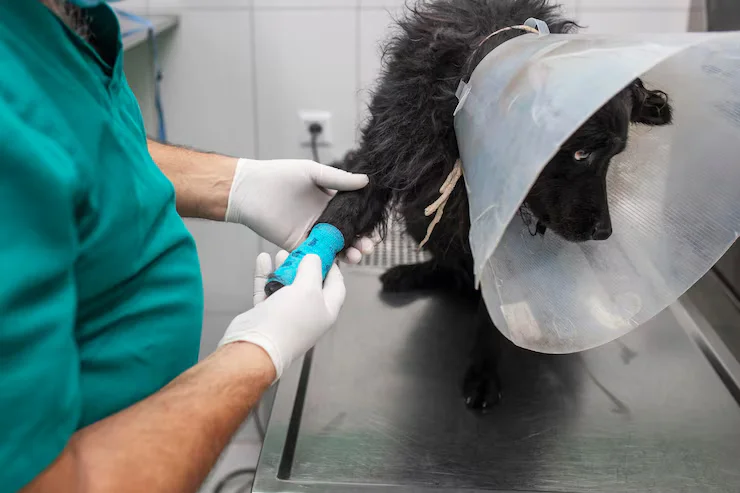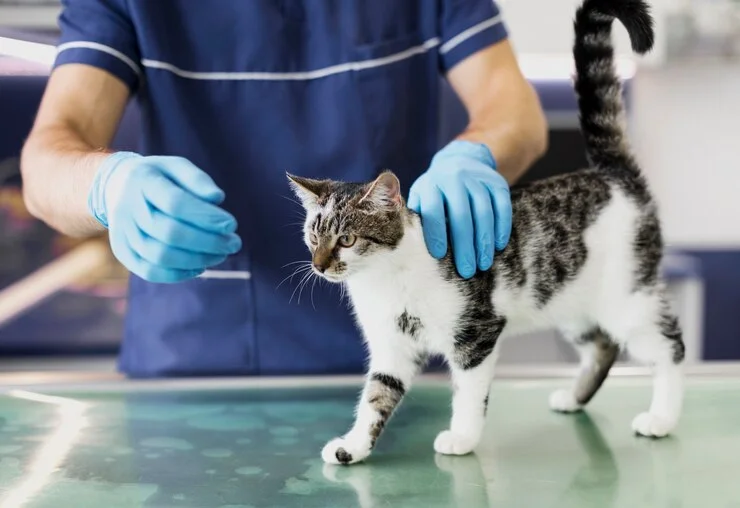-
Kutchina service center, Kolkata - 700010
Kutchina service center, Kolkata - 700010

Learn about the recovery process after pet surgical care, with tips for wound management, activity restriction, and when to contact a vet. Insights from one of the Best Pet Clinics.

Caring for your pet after surgery can be an emotional and challenging time for any pet owner. While the surgery itself might be stressful, knowing how to navigate the recovery process is essential to ensuring your furry friend heals properly and returns to their happy, healthy self. In this guide, we will walk you through everything you need to know about pet surgical care, so you feel confident and well-prepared during your pet’s recovery journey.
The recovery process does not end the moment your pet leaves the clinic. In fact, proper pet surgical care is crucial to minimize discomfort, prevent complications, and speed up the healing process. Whether your pet underwent a routine procedure, like spaying or neutering, or something more complex such as orthopedic surgery, understanding the recovery stages and how to assist your pet during this time can make a world of difference.
The first 24 hours after surgery are especially critical, as your pet’s body begins to recover from anesthesia. But even after this initial phase, ongoing care is necessary to ensure a smooth healing process. By knowing what to expect and how to respond, you can be proactive in ensuring your pet heals without setbacks.
The first 24 hours following surgery are crucial. Your pet may still be groggy from anesthesia, and their behavior and physical state may be affected. Here’s what to expect and how to manage this important phase:

1. Incision Care
Taking care of the surgical incision is one of the most important aspects of post-surgery recovery. Proper wound care helps prevent infections and ensures healing. Here’s how to manage the incision site:
2. Pain Management
Pets, like humans, experience pain after surgery. Managing pain effectively is essential to keeping your pet comfortable and aiding in recovery.
Post-surgical recovery places extra demands on your pet’s body, and proper nutrition is key to aiding the healing process. The right diet helps replenish energy, repair tissues, and support your pet’s immune system.
Water is essential for the recovery process. Keeping your pet hydrated aids digestion, supports cellular repair, and prevents dehydration, which can slow healing.
Physical activity should be limited during the initial stages of recovery to avoid complications. Excessive movement can delay healing or even cause the surgical site to reopen.
While your pet’s physical activity is restricted, it’s important to keep their mind active to prevent boredom and stress.
It’s important to know when to contact your vet for further guidance. If you notice any of the following, don’t hesitate to reach out:

Q1: How long does recovery usually take?
Recovery time varies depending on the type of surgery and your pet’s age and overall health. Minor procedures may require only a week, while more complex surgeries might take several weeks or even months.
Q2: Can I bathe my pet during recovery?
Generally, no. It’s best to avoid bathing your pet until your vet confirms it’s safe. Water can disrupt the healing process and increase the risk of infection.
Q3: What should I do if my pet refuses to eat?
A lack of appetite is common after surgery due to the effects of anesthesia and medication. Try offering warm, soft food or food with a stronger aroma to entice them. If appetite loss persists for more than 24 hours, consult your vet.
Q4: Is it normal for my pet to sleep a lot after surgery?
Yes, your pet will likely sleep more than usual as their body recovers. However, extreme lethargy or difficulty waking up should be reported to your vet.
Q5: Why is an e-collar necessary?
The e-collar helps prevent your pet from licking or chewing the surgical site, which could cause infections or delay healing.
Recovering from surgery is a journey that requires patience, care, and vigilance. By understanding the essentials of pet surgical care—from managing wounds and pain to providing proper nutrition and mental stimulation—you can ensure your pet’s recovery is as smooth and comfortable as possible.
If you’re seeking expert advice and guidance during your pet’s recovery, it’s essential to rely on trusted professionals who specialize in pet surgical care. The Best Pet Clinic in Kolkata can offer you the support you need every step of the way. Compassionate, professional care tailored to your pet’s individual needs is key to ensuring their health, comfort, and happiness throughout the recovery process. By understanding the importance of proper pet surgical care, following your vet’s instructions, and providing your pet with the love and attention they deserve, you can help them heal effectively and return to their active, joyful self.